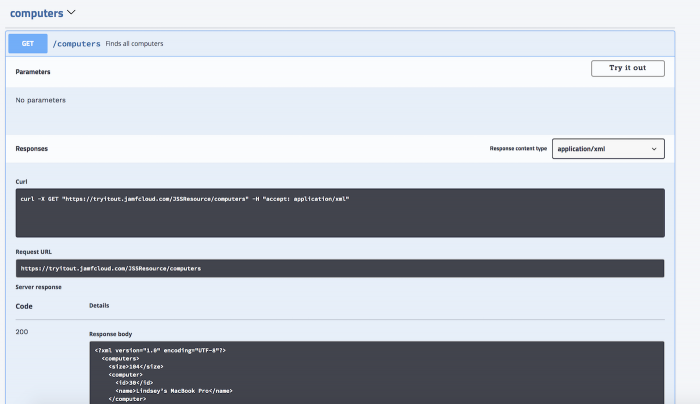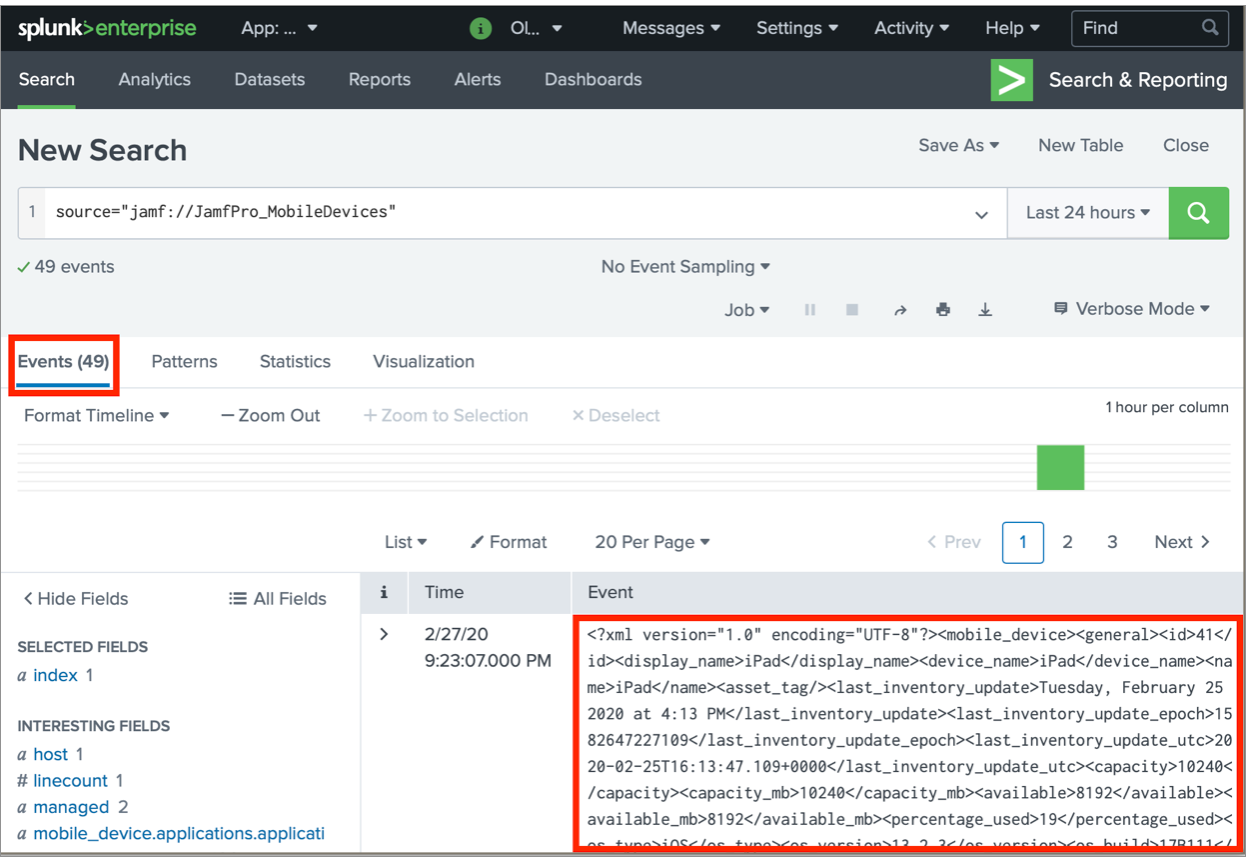
JAMF PRO CLASSIC API PRO
PyJamfPro is a basic Python wrapper for asynchronous communication with the Jamf Pro (and/or Classic) API.The goal is to simplify the process of communicating with the Jamf Pro device management server API by handling authentication and decoding, allowing you to focus on using the data, not retrieving it. Only some API objects are modeled, some only minimally. (This renewal process creates a new Bearer Token and invalidates the old Bearer Token. Asynchronous client for Jamf Classic/Pro API. The module is not a complete implementation of the either the Classic or Jamf Pro API.

JAMF PRO CLASSIC API PASSWORD
# Use encoded username and password to request a token with an API call and store the output as a variable in a script:ĪuthToken=$(/usr/bin/curl –silent –request POST –header "Authorization: Basic $"
JAMF PRO CLASSIC API WINDOWS
# Get username and password encoded in base64 format and stored as a variable in a script:ĮncodedCredentials=$(printf username_here:password_here | /usr/bin/iconv -t ISO-8859-1 | /usr/bin/base64 -i -) The Jamf Pro API is open for user testing But, what if your organization uses other devices like Windows or Linux Your best option might be MDM thats. Learn more about bidirectional Unicode characters To review, open the file in an editor that reveals hidden Unicode characters. Async chunks in parallel (required, default: 20 ) - The number of chunks. If cleared, Axonius will use the Classic API. This file contains bidirectional Unicode text that may be interpreted or compiled differently than what appears below. Use pro API - Select to use Jamf Pro API.


Make sure to tag your requests with "API".As part of the release of Jamf Pro 10.35, the following note was added to the Deprecations and Removals section:īasic authentication - Jamf will discontinue support for Basic authentication in the Classic API in a future release of Jamf Pro (estimated removal date: August-December 2022) for enhanced security. The best way to provide feedback is via Jamf Nation Feature Requests. We'd love to get your feedback and learn more about the features you're hoping to take advantage of in our APIs. In some cases, a combination of both may be necessary, depending on the workflow. RJ Anderson 2016 RJ Anderson 37 Polaris RZR-Rockstar Energy Pro 2 Truck. The Classic API is a great alternative when the feature you intend to leverage isn't yet supported in the Jamf Pro API. Generally speaking, Jamf recommends the use of the Jamf Pro API, given that the feature or functionality you're looking to leverage is supported. The Classic API is the primary tool for programmatic access to data on a Jamf Pro server to allow integrations with other utilities or systems. Use these at your own risk, as future versions of Jamf Pro will likely require updates to your tools or applications, to continue using these endpoints. While endpoints in this preview state are functional, there will likely be changes to them before they're released as v1.

In addition to endpoint versioning, the Jamf Pro API supports a preview mode, which allows consumers to get a sneak peek at endpoints that are in the process of being released. Now that we understand a little of the history and have a basic overview of some fundamentals of each API, let's explore some of the finer details.


 0 kommentar(er)
0 kommentar(er)
